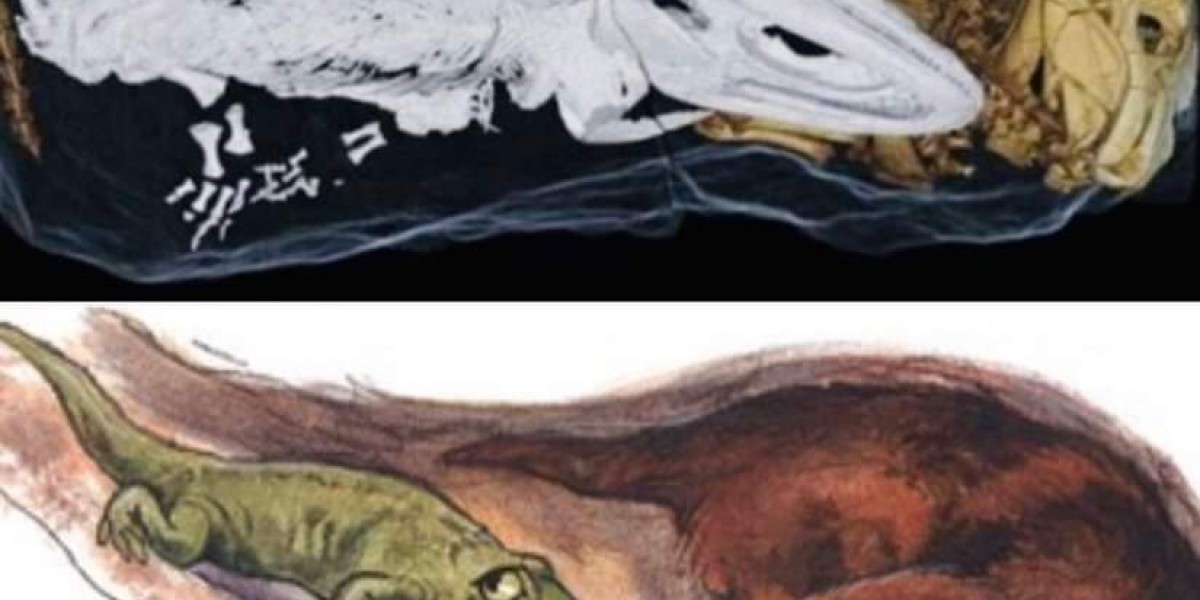250 million years ago, an injured amphibian known as Broomistega tried to find shelter from Earth’s most severe extinction event known as the Great Dying.
During this time, large amounts of carbon dioxide were emitted by volcanic eruptions, which led to an increase in global temperatures and the acidification of the oceans. 70% of life on the supercontinent of Pangea went extinct. Nearly all marine life was wiped out.
The Broomistega managed to crawl down a small warm burrow that was occupied by a dormant Thrinaxodon, a direct ancestor of mammals that was roughly the size of a fox.
Although researchers did find two possible puncture marks on the Broomistega, they did not match the dental configuration of the Thrinaxodon. The Broomistega was suffering from broken ribs, but it showed signs of healing, which indicated that its injury was not caused by a struggle between the two Triassic creatures.
Researchers also ruled out the idea that the Broomistega was washed into the lair due to the narrow passageways of the burrow.
Their peaceful cohabitation came to an end when a muddy flood buried them in the burrow while they dozed off together.








